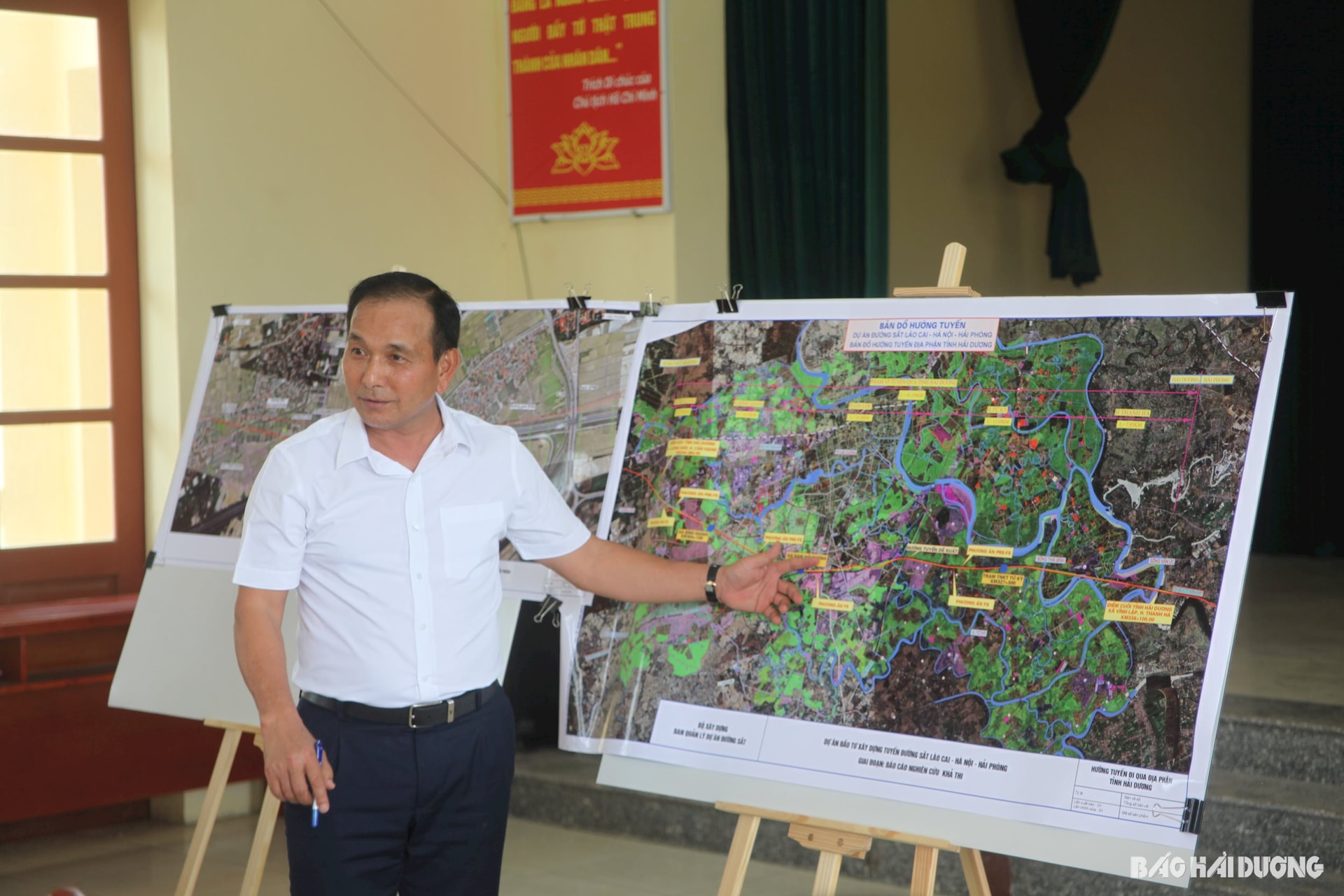Hai Duong province is mobilizing its entire political system to realize work items of Lao Cai – Ha Noi – Hai Phong railway project.

Lao Cai – Ha Noi – Hai Phong railway project holds strategic importance in establishing a Northern railway transport network along the East-West corridor, connecting the Northwestern region with the Red River Delta and Hai Phong port, one of the country’s largest maritime hubs.
As a locality traversed by the railway, Hai Duong province not only benefits directly from the project but also reaffirms its role as a strategic link in the regional transportation network.
By May 21, Hai Duong had identified about 188 ha of land to be recovered for site clearance, affecting 3,296 households, 407 of them will require resettlement. The total cost for site clearance is estimated at 3,893 billion VND.
The province has been implementing eight resettlement projects covering a total area of 28.86 ha, with an estimated investment of 465 billion VND. The resettlement sites are planned in convenient locations to meet the residents’ living and production needs. Construction is scheduled to begin in September and finish by November 2025.
.png)
Cadastral surveying and recovery documentation for 19 communes and townships have been basically completed. The localities are now expediting land origin verification, aiming for completion within this month.
The province has finished reviewing affected infrastructure, including 76 electricity-related structures, 124 agricultural and rural development facilities, and 44 road intersections involving expressways, national highways, provincial roads, and district roads.
The province is actively reviewing plans for areas surrounding railway stations to optimize land use and capture added value from nearby developments.

The project implementation reflects a strong commitment from the provincial to grassroots levels. Tu Ky district, which has the longest section of the railway in the province, held community meetings and resettlement site surveys from the early stage. Resettlement areas in Ky Son, Chi Minh, and Binh Lang communes, comprising around 190 plots, are undergoing documentation finalization.
In Binh Giang district, the location of Binh Giang station, local authorities are actively cooperating with consultants on route surveying and alignment, review of plans for areas surrounding the station, and site clearance.
“The district authorities have required relevant communes to intensify public communication to ensure that residents understand the policy and refrain from building or repairing structures within the planned area,” said Vice Chairman of the district People’s Committee Nhu Van Chuyen.

With the action motto "6 Clarities" – clear people, clear tasks, clear timelines, clear responsibilities, clear outcomes, and clear authority – and the guiding principle “No delays, only action,” Hai Duong is committed to completing site clearance by November to meet the Prime Minister’s direction to commence construction on December 19, 2025.
Key interregional and international connectivity project
Lao Cai – Ha Noi – Hai Phong railway project is a nationally significant work with a total length of 390.09 km, passing through nine provinces and cities. It begins at the border rail between Vietnam’s Lao Cai station and China’s North Hekou station and ends at Lach Huyen port in Hai Phong city. The designed maximum train speed is 160 km/h, serving both passenger and freight transport.
The section through Hai Duong province is 40.96 km long, crossing five districts of Cam Giang (approx. 3.05 km), Binh Giang (approx. 8.6 km), Gia Loc (approx. 10.5 km), Tu Ky (approx. 10.95 km), and Thanh Ha (approx. 7.86 km).
Three railway stations will be built in Hai Duong, including Binh Giang station in Hung Thang commune, Binh Giang district; Hai Duong Nam station in Le Loi, Yet Kieu communes and Gia Loc town, Gia Loc district; and Tu Ky station in Chi Minh commune, Tu Ky district. These centrally-located stations are expected to ensure good connectivity with industrial parks, residential areas, and the existing transportation network.
HA NGA